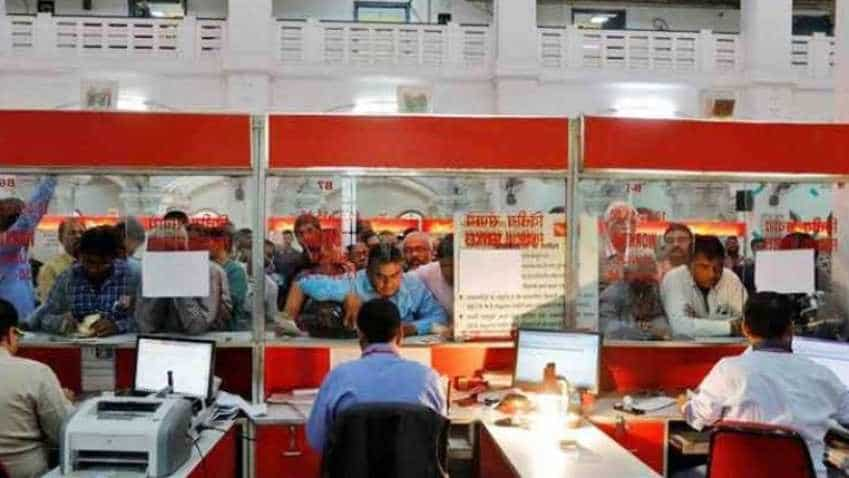Post Office Recurring Deposit (RD): From interest rates to late payment charges, here are all details
The most popular one is a five-year recurring deposit account (RD), that offers you a interest of 7.20 per cent, according to India Post's website, indiapost.gov.in. While the interest rates rate subject to change quarterly, while the govt has just reduced the interest rates applicable to small savings schemes by 10 basis points.

There are over 1.5 lakh post office branches in the country, which deliver your packages safely, but importantly, also offer as many as nine different government-sponsored savings schemes that citizens can save their money in as well as get great returns to ensure they have, money-wise, comfortable retirement years. The most popular one is a five-year recurring deposit account (RD), that offers you a interest of 7.20 per cent, according to India Post's website, indiapost.gov.in. While the interest rates rate subject to change quarterly, while the govt has just reduced the interest rates applicable to small savings schemes by 10 basis points.
From interest rates to late payment charges, here are the latest details you should know about Post Office Recurring Deposit scheme:
Rules for opening a Post Office Recurring Deposit account:
1. To open a five-year recurring deposit account, a minimum investment of Rs 10 per month is required to be invested.
2. Deposits can be made subsequently up to 15th day of next month if the account is opened up to 15th of a calendar month, and up to last working day of next month if account is opened between 16th day and last working day of a calendar month.
3. A monthly deposits can be made in multiples of Rs 5, according to indiapost.gov.in.
4. A depositor can have more than one account in his/her own name, or jointly with another person.
5. The deposited amounts are repayable in lump sum at the end of five years from the date of first deposit along with prescribed interest from time to time.
Rules for premature withdrawal:
One withdrawal up to 50 per cent of the balance is allowed after one year. However, it should be repaid in lump-sum along with interest at the prescribed rate at any time during the currency of the account, according to India Post.
Late payment charges:
1. Non-payment of a monthly installment leads to a default.
2. A default fee of five paise is charged for every five rupees.
3. In case of a monthly default payment, the depositor has to first pay the defaulted monthly deposit along with default fee and then he can pay the current month's deposit.
4. There would be maximum of four defaults, allowed according to indiapost.gov.in.
Get Latest Business News, Stock Market Updates and Videos; Check your tax outgo through Income Tax Calculator and save money through our Personal Finance coverage. Check Business Breaking News Live on Zee Business Twitter and Facebook. Subscribe on YouTube.
RECOMMENDED STORIES

Small SIP, Big Impact: Rs 1,111 monthly SIP for 40 years, Rs 11,111 for 20 years or Rs 22,222 for 10 years, which do you think works best?

Rs 3,500 Monthly SIP for 35 years vs Rs 35,000 Monthly SIP for 16 Years: Which can give you higher corpus in long term? See calculations

SBI 444-day FD vs PNB 400-day FD: Here's what general and senior citizens will get in maturity on Rs 3.5 lakh and 7 lakh investments in special FDs?
10:06 PM IST









 Bal Jeevan Bima Scheme: Children get life insurance cover and sum assured up to Rs 3 lakh, know details
Bal Jeevan Bima Scheme: Children get life insurance cover and sum assured up to Rs 3 lakh, know details Income Tax: Invest in THESE 5 Post Office saving schemes to get up to Rs 1.5 lakh tax benefit
Income Tax: Invest in THESE 5 Post Office saving schemes to get up to Rs 1.5 lakh tax benefit  Govt hikes NSC interest rate: Here’s how much return investors can get on maturity
Govt hikes NSC interest rate: Here’s how much return investors can get on maturity  How to check Post Office savings account balance
How to check Post Office savings account balance India Post Recruitment 2022: bumper recruitment drive for 38,926 Gramin Dak Sevaks open now; know eligibility; how to apply?
India Post Recruitment 2022: bumper recruitment drive for 38,926 Gramin Dak Sevaks open now; know eligibility; how to apply?